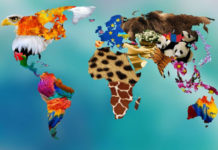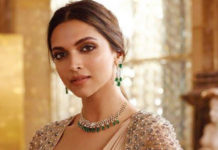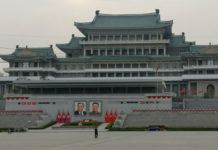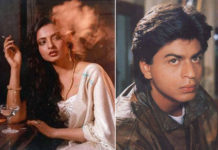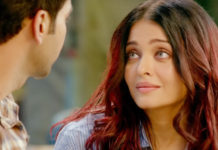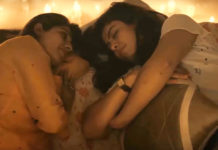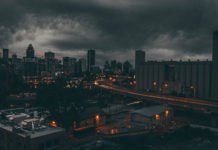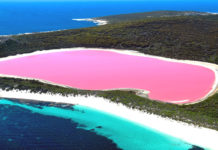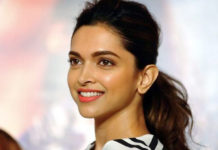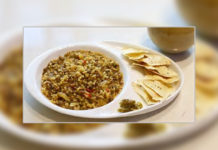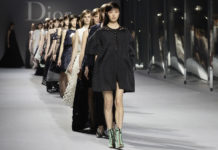Apparels Across India
1. Andhra Pradesh

Women traditionally wear Langa-Voni or Sarees and Men wear Dhoti, called as Pancha and kurta.
2. Arunachal Pradesh

Accessories are a must for very women – Tribal and Urban dwelling.Women wear a sleeveless chemise with an embroidered, full-sleeves jacket, along with a petticoat or skirt. The attire is never usually complete without ‘Mushaiks’ or waistcoat. A skull- cap filled with Yak hair, called as the ‘Gurdam’, adds elegance to the overall attire.Belts are an important part of costumes for women, both in daily wear and ceremonial dresses, and in fact, is a symbolic representation of the social and marital status of girl. Unmarried and married women wear different types of belts around their waist.
3. Assam

Women drape a special 3-piece saree known as Mekhla Chador, and a shawl like piece which is tied around their waist. Men wear a “gamcha” like headgear which is also tied around their waist during festivities.
4. Bihar

Women traditionally wear a saree and unmarried girls wear salwar kameez, while men wear kurta Pajama and elder men wear dhoti kurta
5. Chattisgarh

Women wear sarees, which is called lugda (saree) and polkha (blouse). They extensively accessorize themselves with a necklace made of coins, a nose ring, bangles and a waistband.
6. Goa

Goan Women traditionally wear “Nav-vari” which is a nine-yard Saree, its similar to Maharastrian dressing. They accessorize themselves with various ornaments. GoanCatholics, have imbibed Portuguese culture due to 4 centuries of colonization and they typically wear dresses or gowns.
7. Gujarat

Women, traditionally wear sarees, in which the pallu is taken back to front- due to which the designs on the pallu is highlighted. Men wear kurta-pajama and elders wear dhoti-kurta. They wear traditional colourful costumes- Bandhanichaniyacholi with heavy embellishments and men wear kafnipajamas with short round flared kurta, called as ghagra during Navratri celebrations.
8. Haryana

Women’s basic trousseau includes ‘Damaan’, ‘Kurti’ & ‘Chunder’. ‘Chunder’ is the long, coloured piece of cloth, decorated with shiny laces, meant to cover the head and is drawn in the front like the ‘pallav’ of the saree. Kurti is a shirt like blouse, usually white in colour. The ‘Daaman’ is the flairy ankle-long skirt, in striking colours. Men traditionally wear kurta pajama while elders wear dhoti-kurta and a head gear that marks their respect.
9. Himachal Pradesh

During marriages and other festive occasions, the Gaddis wear cotton frocks which are red or maroon colored. The frocks are further decorated with frills, mirrors and pippins and are popularly known as Luancha or Kadds. They are tied around the waist area with yellow or white cotton strands, known as Patlka. Maroon or red colored shawl is worn over the frock and an intricate Sehra or veiled headgear is also worn as per customs.The Gaddi women wear Luanchari with Dor and accompanied with long Dupattas. The Luancharis are very elaborate in make and requires around 20 meters of fabric. The Dors are usually black colored and it also serves the purpose of carrying loads on the back.
10. Jammu and Kashmir

The Pheran, for Kashmiri women – a loose kurta like clothing that fslls till the knees, is more stunning and graceful with the heavy embroidery and has broad sleeves. Pheran is considered a combination of Indian and Iranian clothing. The Hindu Kashmiri women also use Pheran as their dress with a little distinction. A Hindu woman’s Pheran touches her foot which is tied at the waist with folded material called lhungi. Their dress is fully embellished with brocade including the head-dress called Taranga. The men’s wear for the Kahmiri Hindus mainly includes ChuridarPajama and they use the beautiful skull caps without a shawl.
11. Jharkhand

The clothing has imprints or paintings of the various colors of tribal art and life embellished on it. This gives the clothing a special look and appeal. The vibrant colors and high quality fabrics such as silk are some of the important factors that are taken care of by the people while they adorn this costume.
12. Karnataka

Traditional war for women is saree. Mostly silk sarees, as Karnataka is very famous for silk. Men wear lungi under a shirt and also take Angavastram.
13. Kerala

Women wear ‘Set Saris’ which are white saris with borders of gold thread (Kasavu) and blouse matching the sari border. Colour could be seen with men, who prefer white dhoti with’kasavu’ borders for such occasions. Young girls wear long skirts and blouses of various colours.
14. Madhya Pradesh

Women traditionally wear sarees similar to the Gujarati style or wear simple chaniya cholis while men war kurta pajama or dhoti kurta (especially elders) with a traditional head gear, called pagri.
15. Maharastra

Women prefer draping Sareesin the kasta style, also called as the nav-vari; while men prefer kurta pajamaand elders are seen in kurta and dhoti with head gear.
16. Manipur

Clothing for women includes a shawl known as Innaphi, a Phanek which is worn around a skirt named sarong. Phanek is another traditional dress of Manipuri women that is worn like a sarong. It is a hand woven dress. There is a special Phanek that is called as MayekNaibi, which has attractive horizontal stripes.Men wear white turban (pagri), jacket and dhoti. Khamenchatpa is a ritual dhoti which is worn by the superior member of society
17. Meghalaya

Most of the families earn their livelihood from weaving. The traditional clothing for women is called as Jainsen which is not stitched costume. It needs to be covered around the body to wear it. It is designed and woven from the mulberry silk which is cultivated in this area. The glory of the dress is EndiSlikshawal.
18. Mizoram

Mizo women love to beautify themselves in Puran, which is the most favorite dress in Mizoram. The lively color and the exceptional designs and fittings made this outfit superb. Puanchei is the beautiful costume of girls, mostly worn during festivals like Pawl Kut and ChapcharKut. Men in Mizoram like to like a simple life. This also reflects in their traditional clothing. They dress up in a long piece of cloth. During the winter season, additional clothing is draped like a coat. Red and white colored coats are mostly preferred by the Mizo males.
19. Nagaland

Clothing of Nagaland comprises a wide variety of shawls. There is an ornate warrior celebrating type of shawl, known as Tsungkotepsu is a feature of the Aos clan. Instead of the shawl, the typical working clothing is a kilt commonly of black color. It looks stunning on both men and women and popular for its unique style in Nagaland. The shawl is embroidered with exceptional cowries.
20. Odisha

Women wear traditional sarees in different variations while men also like to wear their traditional outfits. They attire Dhoti, kurta with a Gamucha. The main member of the family is the eldest man who follows their religious costume strictly so that others also stay in touch with their culture and wear their traditional costumes.
21. Punjab

Women prefer wearing salwar-Kurta or ChuridaarKurta or Patiala Kurta with beautiful odhnis and accessories, while men genrally wear kurta-pajama and some also wear the traditional tehmat.
22. Rajasthan

Appealing clothing and jewelries for people are worn by considering the desert land and the surrounding atmosphere.Women of Rajasthan wear a long skirt called Ghaghra, Choli or Kurti (blouses and tops) with an Odhini.The one corner of Odhni is properly tucked inside the skirt and the other end is worn over the right shoulder or the head. The motifs and colors which are available on this dress are especially to caste, kind of dress and worn occasionally. The turban called Pagri, Pyjamas, Angarkha, Dhoti, Waistband (Patka) and Kamarbandh are integral clothing of men in Rajasthan.
23. Sikkim

Clothing of Sikkim shows the cultural and social lifestyle of major communities like Nepalis, Bhutias and Lepchas. There are different types of costumes worn by these 3 communities that further divided into a wide variety. The inherited clothing is Dumdyam or Dumvum, it is a type of cozy and smooth ankle-long costume, dressed like a traditional saree. It is worn by many women throughout in Sikkim. Tago is another beautiful dress which is a loose-fitted worn with blouse called as Nyamrek, a type of belt and Taro, a traditional headgear. Menmostly wear Thokro-Dum that includes a pajama, a shirt, Shambo (headgear) and Yenthatse. The dress of male is rough and good for the field work. Bhutia men wear Kho, also called as Bakhu. It is tied at the neck and the waist with cotton or silk belt.
24. Tamil Nadu

The men of Tamil Nadu wear traditional attires like Lungi or Dhoti, with Angavastra and a shirt. The women mostly wear traditional Saree and blouse.
25. Telangana

Men in Telangana commonly like to wear Dhoti and Kurta, whereas women prefer saree. Women from all communities can be seen wearing different patterns of sarees. Even Muslim and Christian women wear saris.
26. Tripura

Rignai is the lower half of the dress. It is like a draped skirt and has a significant cultural importance. Every clan in Tripura has their version of Rignai in terms of designs and patterns. A woman’s clan could be identified with the Rignai she was wearing.Risa is a component of the female dressing culture in Tripura. It is the part of the dress which covers the upper half of a women. The wearing of the Risa involves draping the chest around the back twice in order to provide protection and support to the chest.
27. Uttar Pradesh

Men either wear kurtapajamas or dhoti-Kurtas and Women can be seen in wide varieties of clothings- Salwarkameez, sarees, lehengas which are all influenced by the Mughal and Awadhi cultures. Chikan work embroidery is very famous in Lucknow.
28. Uttarakhand

People wear clothes suitable to the climatic conditions of the place they belong to. Wool fetched from goat or sheep is used to manufacture warm costumes, so as to ward off the biting cold in winter season. Ghagri, an oriental long skirt, topped off by a Choli, an Indian blouse and an Odhni, a cloth covering the head and the front portion, usually fastened to the waist. Men usually wear eithkurta Pajama or Lungi/Dhoti with kurta with a pagri.
29. West Bengal

People here generally prefer cotton clothing. Women are seen wearing Bengal Cotton sarees draped beautifully with a big red round bindi, which accentuates their beauty while men are generally seen in dhoti-Kurta with a gaamcha or kurta pajama.
By : Archa Dave

